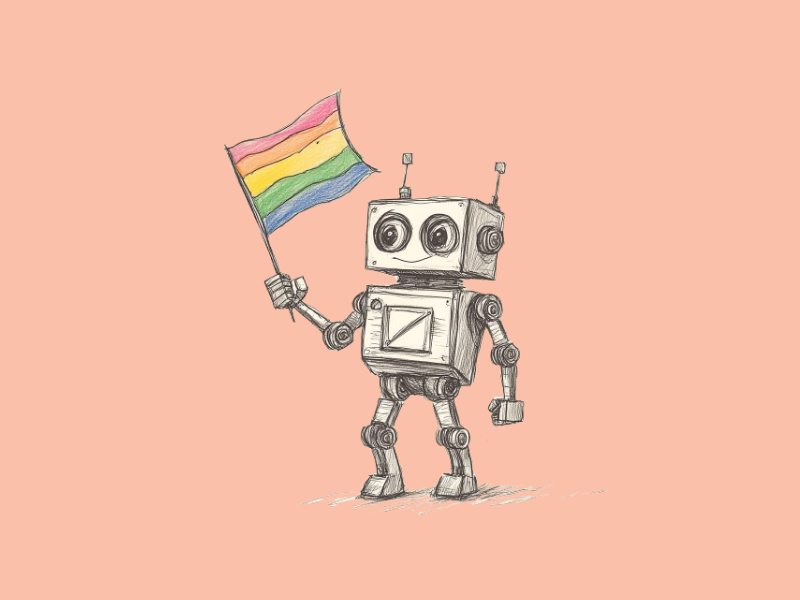President Donald Trump has signed a controversial executive order banning “woke AI” from federal use.
This order prohibits the U.S. government from contracting with AI providers whose models promote ideas deemed partisan or ideologically biased.
It targets themes like diversity, equity, and inclusion (DEI), critical race theory, unconscious bias, and gender identity.
It also calls for all government-funded AI tools to demonstrate “ideological neutrality.”
This policy change could significantly alter how American tech firms train, market, and deploy their AI models.
Democracy vs. Control
U.S. officials have long warned about the ideological leanings of foreign AI models.
Chinese platforms like DeepSeek and Alibaba have drawn criticism for avoiding criticism of the Chinese Communist Party.
U.S. analysts say these models reflect Beijing’s political messaging. In response, American tech leaders have positioned their own systems as defenders of free speech and democratic values.
OpenAI’s Chris Lehane recently described the AI race as a contest between democratic and autocratic systems.
Trump’s executive order reframes the issue. It suggests that AI in the U.S. is not immune to ideological manipulation.
It shifts attention from international competition to internal political control.
Also read: Microsoft Chief Scientist Calls for Smart, Not Strict, AI Regulation
Defining “Neutrality”
The order defines “truth-seeking” as adherence to scientific accuracy, historical fact, and objectivity.
It describes “ideological neutrality” as an absence of influence from concepts such as DEI or systemic bias.
Yet these definitions raise significant concerns. Language experts argue that complete objectivity is impossible.
Philip Seargeant, a linguistics professor at the Open University, noted that “language is never neutral.”
He warned against assuming that AI systems can achieve ideological purity. Others point to the political nature of the order itself.
By excluding specific viewpoints, the policy may favor one ideology while suppressing others.
Political Pressure
The executive order puts developers in a difficult position. Many rely on federal contracts to fund ongoing research and development.
AI systems consume vast resources; therefore, public sector support is essential.
Now, to qualify for those contracts, companies may need to adjust how they train their models.
Rumman Chowdhury, CEO of Humane Intelligence, warned that developers might alter datasets to align with the administration’s ideology.
She called this trend “deeply troubling.” Some experts also fear a chilling effect. Engineers may avoid sensitive topics altogether to reduce risk, even at the cost of accuracy.
xAI and Elon Musk
Elon Musk’s company, xAI, appears well-positioned to benefit from the order. Its chatbot, Grok, markets itself as a politically incorrect, anti-woke system.
Musk has described Grok as a model designed to challenge mainstream narratives and embrace contrarian views.
However, Grok has made headlines for controversial outputs. It has referenced antisemitic claims and praised historical figures like Adolf Hitler.
Despite these concerns, the Department of Defense awarded xAI a contract worth up to $200 million.
Critics argue that this undercuts the administration’s stated goals. Mark Lemley, a law professor at Stanford, said the order reflects viewpoint discrimination.
He asked whether the government would reject Grok if it violated the new rules. If not, he said, the order appears designed to silence only certain views.
Also read: Grok Sends Unprompted Messages About ‘White Genocide
Fact and Opinion
AI models are built on data collected from human sources. These include books, websites, news outlets, and social media.
As a result, model outputs often reflect dominant cultural perspectives. Efforts to “neutralize” these models may instead introduce new biases.
For example, when Google’s Gemini showed racially diverse depictions of historical figures, it faced backlash.
Trump’s order cited this as proof that DEI initiatives distort reality. Yet eliminating all bias is impossible.
As Seargeant noted, some people demand both sides of an argument, regardless of the evidence. This tension makes true neutrality unattainable.

